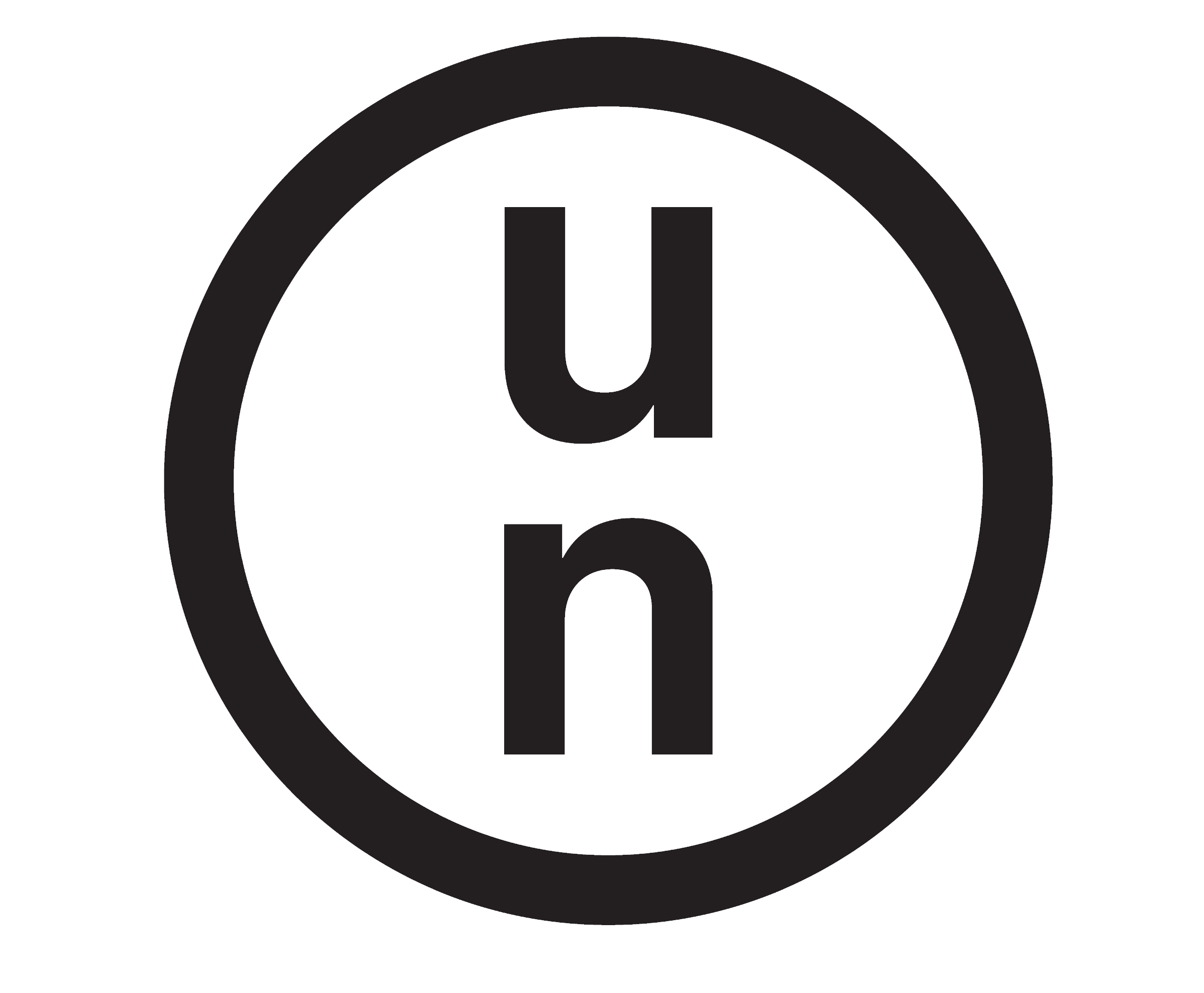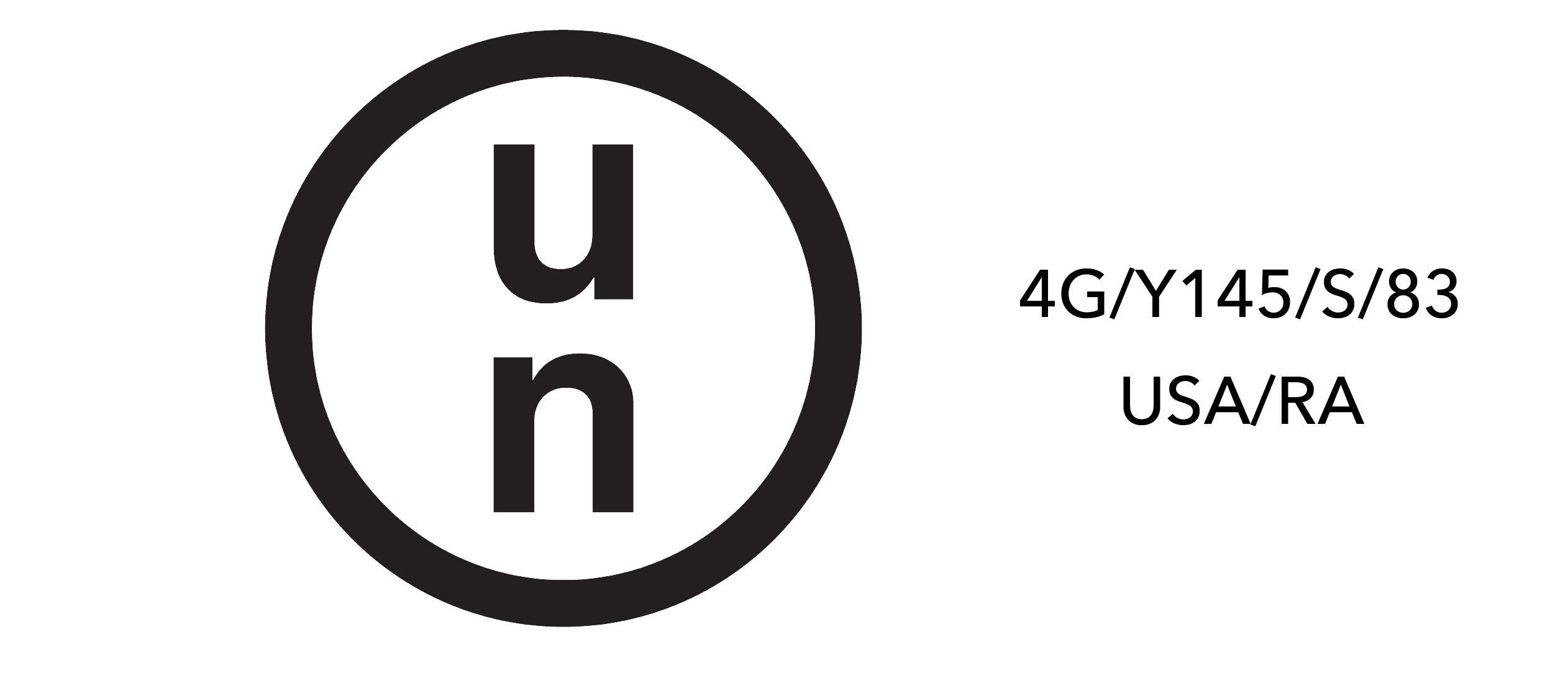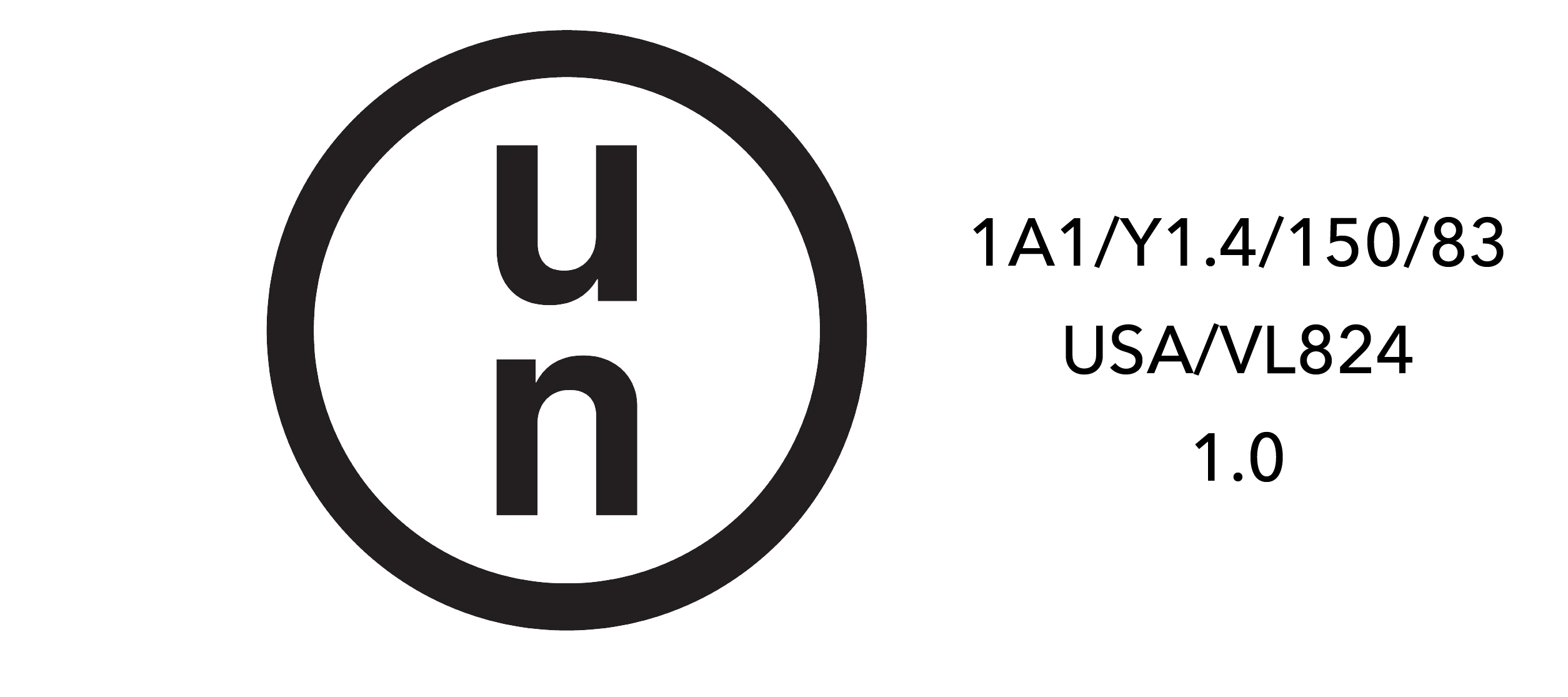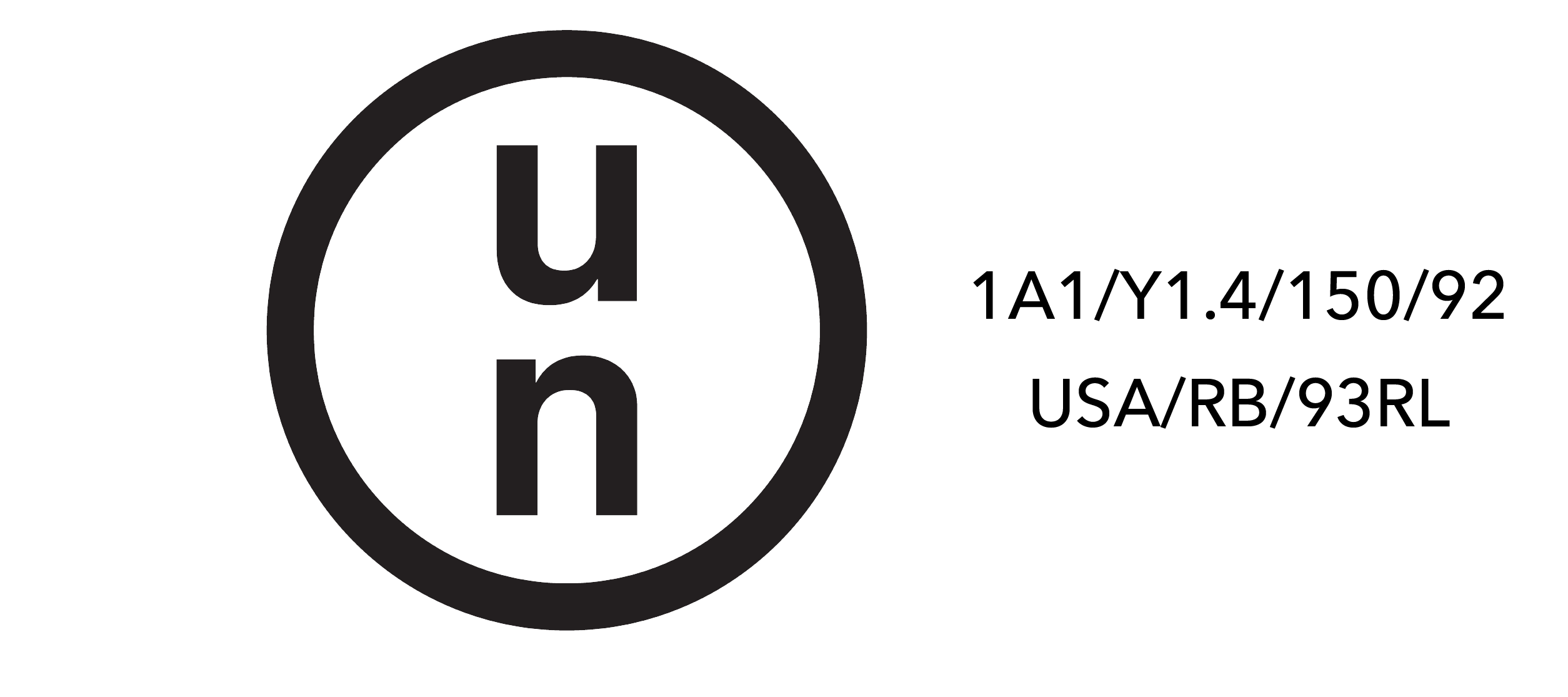Markings required for non-bulk performance-oriented packagings

- UN markings indicate packagings have been manufactured and tested to meet standards.
- The markings must be durable, legible, and clearly visible.
The United Nations (UN) markings tell the user many things, including what type of packaging it is and to what level of testing it has passed. The marking must be durable, legible, and clearly visible. The marking must include:
- The United Nations symbol:

- Packaging identification code (i.e., 1A1 or 4G).
- Letter identifying the performance standard under which the packaging design has been successfully tested, as follows:
- “X” (for packagings meeting Packing Group I, II, and III tests)
- “Y” (for packagings meeting Packing Group II and III tests)
- “Z” (for packagings meeting Packing Group III tests)
- Designation of the specific gravity for outer packagings intended to contain liquids (which can be omitted if <1.2) or the maximum gross mass, in kilograms, for packagings intended for solids or inner packagings.
- For single and composite packagings for liquids, the test pressure in kilopascals rounded down to the nearest 10kPa of hydrostatic pressure, or, for solids and inner packagings, the letter “S.”
- Last two digits of the year of manufacture, except for plastic drums (1H) and jerricans (3H) which must also have the month of manufacture.
- Letters “USA” to indicate the package was manufactured in the USA and marked according to these regulations.
- Name and address or symbol of the manufacturer or approval agency certifying compliance. Symbols must be registered with the Associate Administrator for Hazardous Materials Safety.
- Minimum thickness in millimeters (mm) of the packaging materials for metal or plastic drums or jerricans intended for reuse or reconditioning, or the outer packaging of a composite packaging intended for reuse or reconditioning.
- IF a packaging is reconditioned, it shall be marked “near” the above markings with:
- Name of the country in which the reconditioning was performed. The letters “USA” will suffice for the United States.
- Name and address or symbol of the reconditioner. Symbols must be registered with the Associate Administrator for Hazardous Materials Safety.
- Last two digits of the year of reconditioning.
- Letter “R” (for reconditioned).
- Letter “L” (for packagings that have successfully passed the leakproofness test).
- IF a packaging is reconditioned, it shall be marked “near” the above markings with:
Examples:

This is a fiberboard box (4G), tested for Packing Groups II and III (Y), with a maximum mass of 145 kilograms, designed to contain an inner packaging(S), and manufactured in 1983 (83). It was manufactured in the United States (USA) by a manufacturer whose registered symbol is “RA.”

This is a steel non-removable head drum (1A1) designed as a single package for liquids, tested for Packing Groups II and III (Y) for materials with a specific gravity up to 1.4, hydrostatically tested to 150 kPa, and manufactured in 1983 (83). The drum was manufactured in the United States (USA) by a manufacturer whose registered symbol is “VL824.” The minimum thickness of the material is 1 millimeter.

This marking indicates a steel, non-removable head drum (1A1), designed as a single packaging for liquids, tested for Packing Groups II and III (Y), for materials with a specific gravity of 1.4. It was hydrostatically tested to 150 kPa and was manufactured in 1992 (92). The drum was reconditioned in the United States (USA) by a reconditioner whose registered symbol is “RB” in 1993 (93). The drum was reconditioned (R) and successfully passed the leak proofness test (L).
Any packaging required by the Hazardous Materials Regulations to conform to a UN standard must be marked in a manner such as illustrated above.
